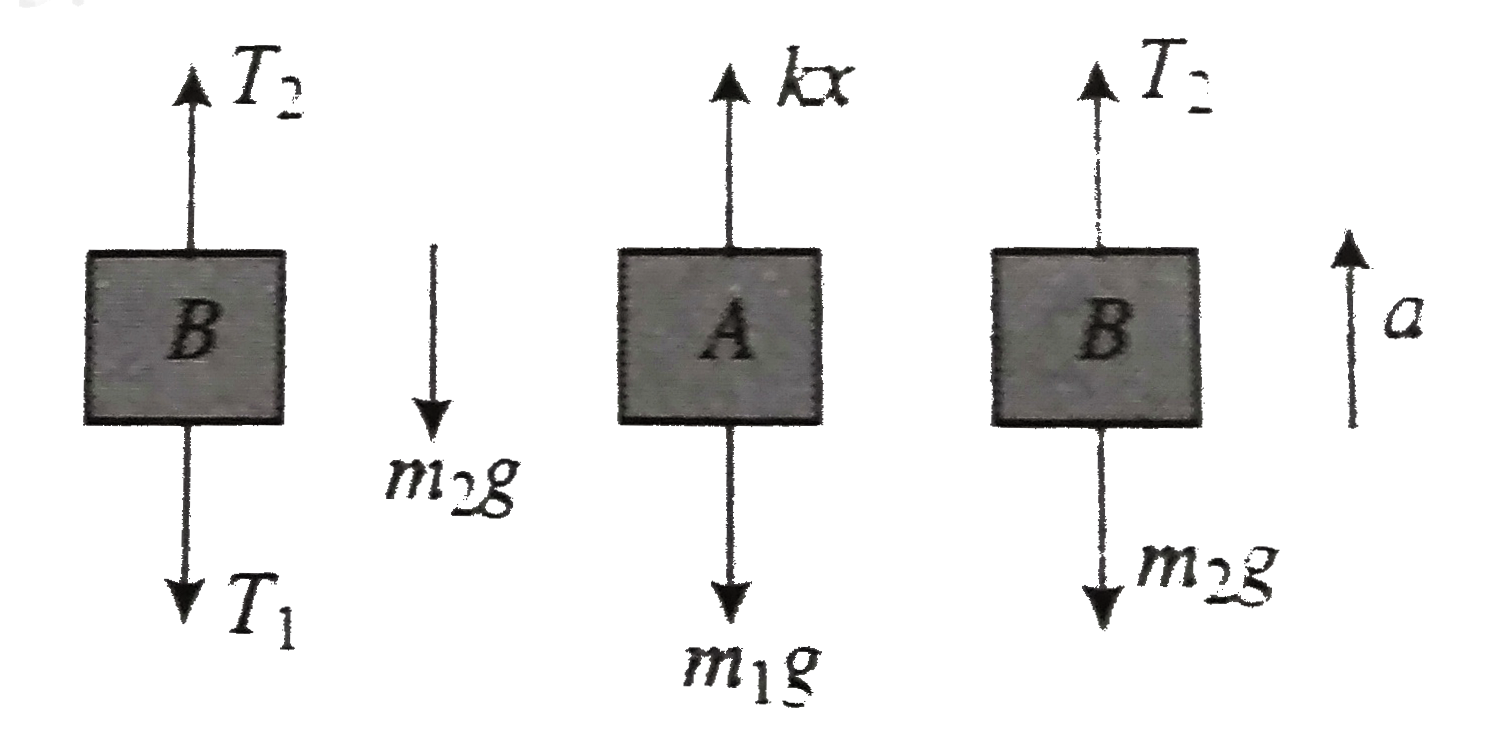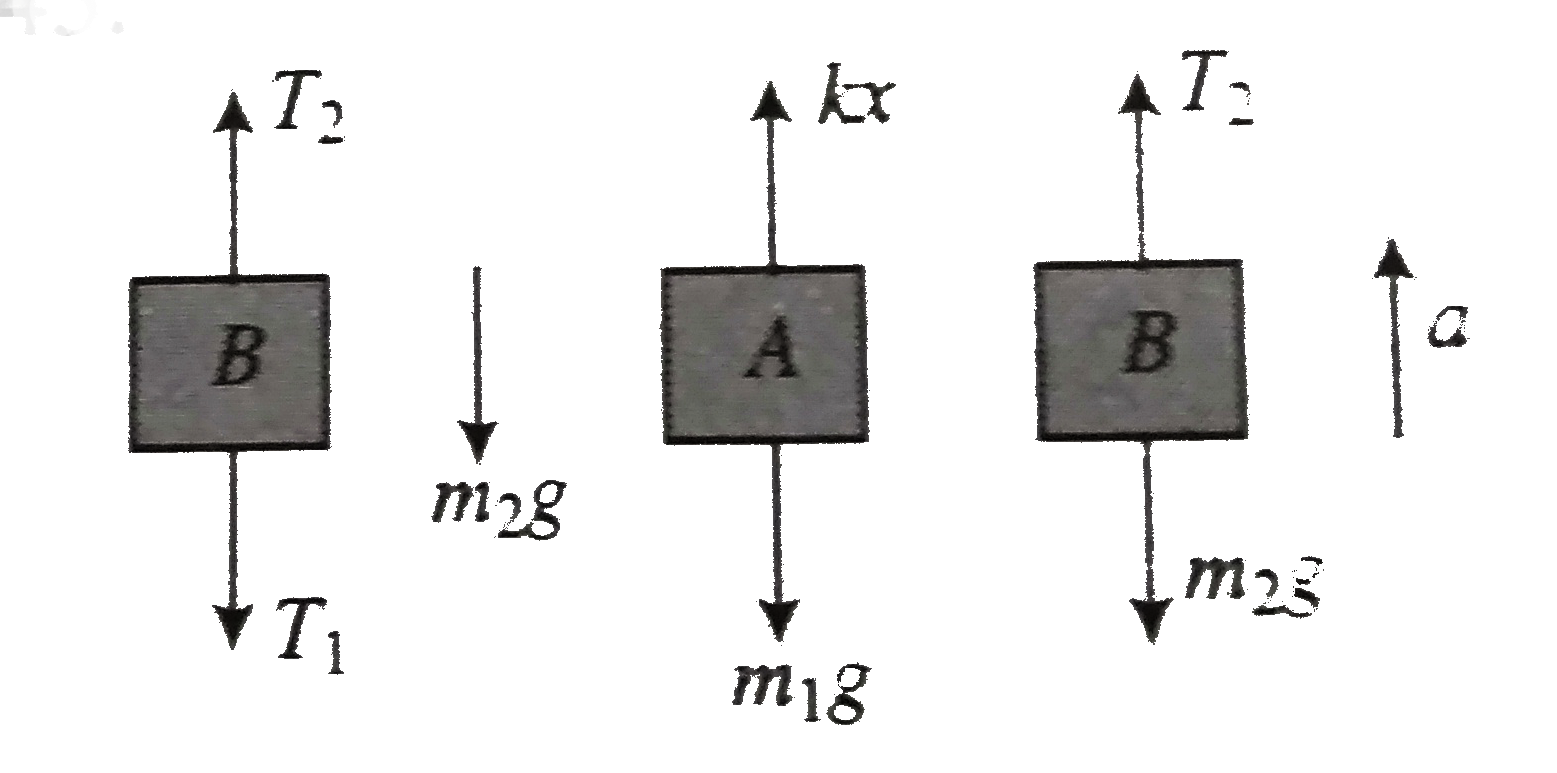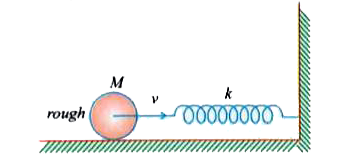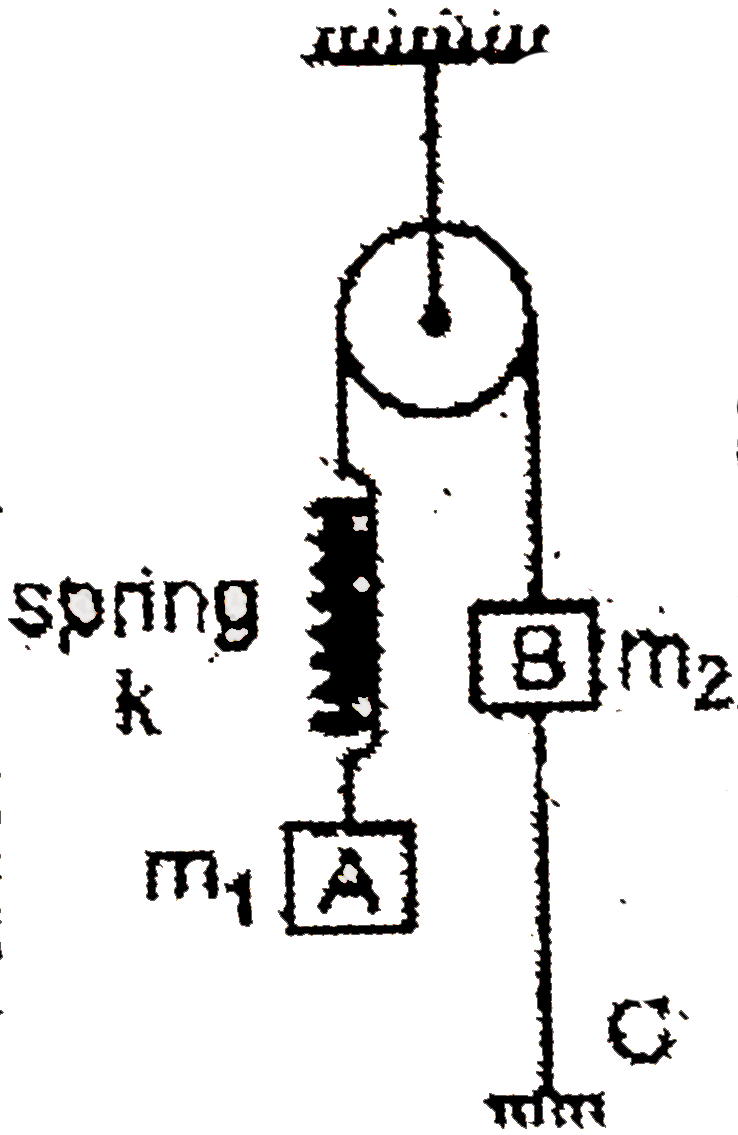In the system shown in fig. m1>m2 . The system is held at rest by thread BC. Now thread BC is burnt. Answer the following:

Just after burning the thread, what is the tension in the spring?
m1g
m2g
Zero
Cannot say
The correct Answer is:A
Before Burning BC, the free-body diagram are shown in the fig.

T2=T1+m2g …(i)
kx=T2=m1g..(ii)
where x is extension in the spring. Just after burning, T1 will become zero. but T2 will remain same.
T2−m2g=m2g⇒a=(m1−m2g)m2
As T2 remains same, acceleration of block A will still remain zero.
Topper's Solved these Questions
- NEWTON'S LAWS OF MOTION 1BOOK - CENGAGE PHYSICSCHAPTER - NEWTON'S LAWS OF MOTION 1EXERCISE - Integer
5 Videos
- NEWTON'S LAWS OF MOTION 1BOOK - CENGAGE PHYSICSCHAPTER - NEWTON'S LAWS OF MOTION 1EXERCISE - Assertion-reasoning
15 Videos
- MISCELLANEOUS VOLUME 2BOOK - CENGAGE PHYSICSCHAPTER - MISCELLANEOUS VOLUME 2EXERCISE - INTEGER_TYPE
10 Videos
- NEWTON'S LAWS OF MOTION 2BOOK - CENGAGE PHYSICSCHAPTER - NEWTON'S LAWS OF MOTION 2EXERCISE - Integer type
1 Videos
Similar Questions
Two small balls of the same size and of mass m1 and m2(m1>m2) are tied by a thin weightless thread and dropped from a ballon. Determine the tension T of the thread during the flight after the motion of the balls has become steady-state.
View SolutionIn the system shown in figure m1>m2. System is held at rest by thread BP. Just after the thread BP is burnt :

View Solution
Knowledge Check
In the system shown in fig. m1>m2 . The system is held at rest by thread BC. Now thread BC is burnt. Answer the following:

Just after burning the thread, what is the acceleration of m2?A(m2−m1m2)gB(m1−m2m1+m2)gCZeroD(m1−m2m2)gIn the system shown in fig. m1>m2 . The system is held at rest by thread BC. Now thread BC is burnt. Answer the following:

Before burnig the thread, what are the tensions in spring and thread BC, respectively?Am1g,m2gBm1g,m1g−m2gCm2g,m1gDm1g,m1g+m2gIn the system shown in figure m1>m2. System is held at rest by thread BC. Just after the thread BC is burnt.
 Aacceleration of m1 will be equal to zeroBacceleration of m2 will be downwardsCmagnitude of acceleration of two blocks will be non-zero and unequalDmagnitude of acceleration of both the blocks will be (m1−m2m1+m2)g
Aacceleration of m1 will be equal to zeroBacceleration of m2 will be downwardsCmagnitude of acceleration of two blocks will be non-zero and unequalDmagnitude of acceleration of both the blocks will be (m1−m2m1+m2)g
In the system shown in the figure m1>m2. System is held at rest by thread BC. Just after the thread BC is burnt :

View Solution
In the system in the figure m1>m2 system is held at rest by thread BC. Just after the thread BC is burnt:
View SolutionTwo blocks of masses m and 2m rest on a frictionless horizontal surface. They are connected by an ideal spring of relaxed length l and stiffness constant k. By means of a massless thread connecting the blocks the spring is held compressed to a length l/2. the whole system is moving with speed v in a direction perpendicular to the length of the spring. the thread is then burnt. Answer the following questions in terms of l,km,v
After burning the string the speed of centre of mass is :
View SolutionTwo blocks of masses m and 2m rest on a frictionless horizontal surface. They are connected by an ideal spring of relaxed length l and stiffness constant k. By means of a massless thread connecting the blocks the spring is held compressed to a length l/2. the whole system is moving with speed v in a direction perpendicular to the length of the spring. the thread is then burnt. Answer the following questions in terms of l,km,v
Before burning, the rato of kinetic energy to potential energy is:
View SolutionTwo blocks of masses m and 2m rest on a frictionless horizontal surface. They are connected by an ideal spring of relaxed length l and stiffness constant k. By means of a massless thread connecting the blocks the spring is held compressed to a length l/2. the whole system is moving with speed v in a direction perpendicular to the length of the spring. the thread is then burnt. Answer the following questions in terms of l,km,v
The time period of oscillation of the system is :
View Solution
